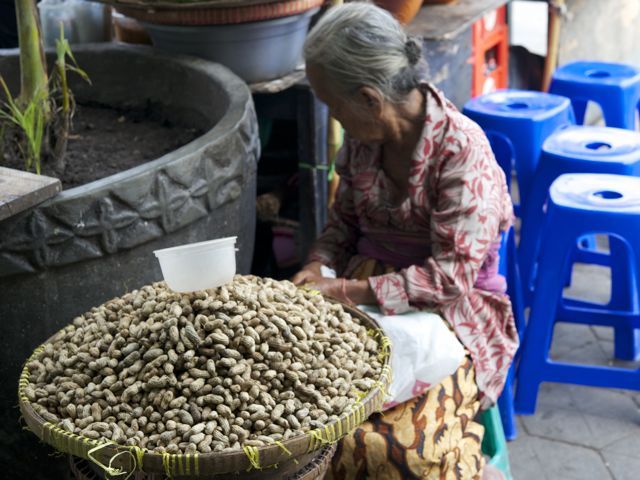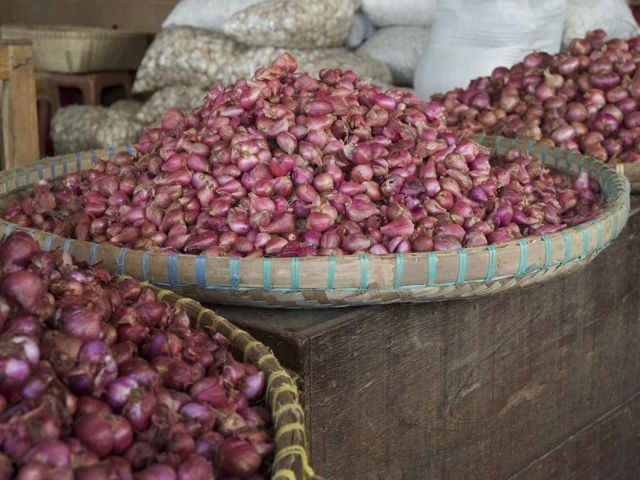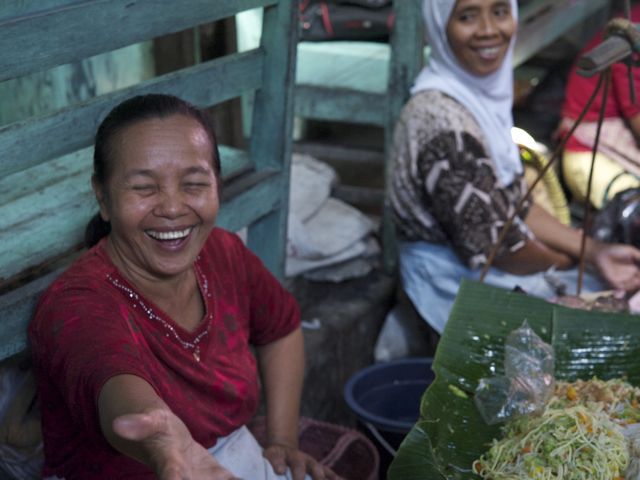Foods markets, especially in Third World countries, are where you can really see what the people are all about. In Yogyakarta, the “traditional market,” as my driver Toto referred to the place where locals shop for food and dry goods, is an open-air, multi-level building teeming with humanity—sullen youths smoking clove cigarettes, wizened old ladies hunched over baskets of shallots,
krupuk sellers, batik-clad matrons shopping for fish, the occasional leathery homeless man brandishing a tin begging cup. Around the perimeter of the market are countless little stands where vendors and cooks ply their specialties: fresh salads, soups, fried tofu and tempeh, cow skin crackers, grilled satays, iced coconut drinks with green cam cau jelly, sweet cakes made from glutinous rice flour. There is a general din composed of the constant roar of motorbikes, the swishing of beans though bamboo strainers, the clang of metal spoons and the sweet melodies of caged songbirds. I am never happier than drifting through such a place, absorbing it all (even the scary smells), tasting what I dare, interacting when I can and marveling at this daily life that is so unlike my own. I took so many pictures that I’ll spread them over a few posts. This one features the many strange and exotic foods I came across (but did not eat) at Beringharjo market, which was built on the site of a former banyan tree forest in 1758.
Read More...











